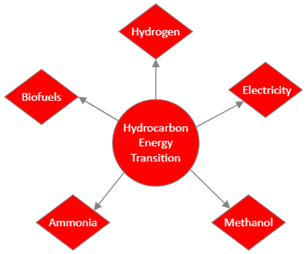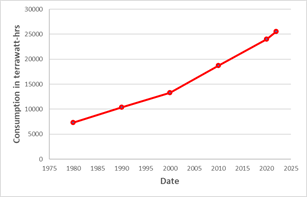TT Talk - Energy transition for a cleaner future

Seven years on from the Paris Agreement, as society transitions away from the use of fossil fuels to provide the energy to sustain industrial, business and domestic life aimed at reducing global carbon emissions and tackling climate change, ports, terminals and logistics operators find themselves at an energy crossroad.
In the complex world of energy transition, innovators within the energy sector are constantly pushing the boundaries with the vision of a new clean fuel source that is sustainable, not just in the context of reducing emissions, but also ensuring that sufficient quantities can be produced to serve the vast demand. This results in multiple fuel sources for manufacturers’ R&D functions to contemplate in the development the next generation of clean port, terminal and logistics equipment.
Ports, terminals and logistics operators find themselves at an energy crossroad.

Figure 1 Energy transition crossroad
While renewable electricity is the current forerunner in terms of scalable clean energy, the manufacture of batteries to store and deliver the energy is not without environmental impact, not least at their end of life. For example, many of the raw materials to manufacture lithium-ion batteries are currently sourced from a small number of countries, giving rise to uncertainties in the context of sustainable availability and ethical issues to overcome.
Furthermore, in most if not all countries, supply is struggling to keep pace with the growth in demand (see fig 2). It is generally accepted that national grids, in both power generation and electrical infrastructure, are not capable of supplying sufficient quantities of electricity to power the supply chain and transport sector, as well as maintaining the lifestyle many have come to expect. Further, with the International Energy Agency predicting a growth in demand of circa 900 terrawatt-hours per year over the next two years, this supply issue may not lessen in the short-term.

Figure 2 Showing growth in global electricity consumption [data from www.statista.com]
Other touted alternative fuels such as ammonia, methane and hydrogen come with safety fears along with huge capital and infrastructural challenges. Pioneers are currently testing the art of the possible with some success, but developing the required infrastructure globally to ensure these fuels are readily available in sufficient quantities feels decades away.
Critically, neither governments nor industry have yet to back a winner. Something as fundamental as an industry wide definitive position would no doubt assist progress. Ports, terminals and logistics operators are likely to resist large scale investment in fuelling infrastructure, whether electric, hydrogen, ammonia or any other, until such time as there is long term security associated with these clean fuels and the equipment to run their operations.
There are, of course, numerous facets to the global supply chain, first, middle and final mile, handling through ports, terminals and logistics or warehouse operations, as well as the maritime journey. All of these components are interlinked by the need to move cargo and all facing the challenge of reducing emissions.
A recently published white paper by APMT alongside DP World and others has taken a step in leading the direction that the cargo handling industry should take – electricity. The white paper sets out a long term vision for the electrification of cargo handling equipment in ports and terminals that will undoubtedly serve to provide confidence for equipment manufacturers to build business models to support industry demand.
The white paper may also serve to shape the direction that other industry stakeholders take on the basis of the trials carried out by the authors over many years leading to the conclusion that electrification of cargo handling equipment is the most viable solution. While this doesn’t represent a silver bullet solution to reaching net zero, it should afford opportunities for all concerned to take positive steps for example to increase manufacturing productivity to meet demand.
In the absence of government intervention, the industry coming together and defining a common stance on future alternative fuels, whether to power ships, trucks or cargo handling equipment appears to be prudent. It is likely the most viable route towards industry wide adoption and will undoubtedly result in decisions being reached by other stakeholders towards investment in the required infrastructure to deliver.
In the absence of government intervention, the industry coming together and defining a common stance on future alternative fuels, whether to power ships, trucks or cargo handling equipment appears to be prudent.
TT Club stands together with its membership and the industry. With the aspiration of demystifying a variety of related challenges that the industry will undoubtedly face in the coming years, TT has launched a new ‘ESG toolkit’. This Toolkit will continue to develop and expand, with a focus on matters that impact the global transport industry in connection with environmental, social and corporate governance. The approach taken to deliver this content is not prescriptive, rather signposting, linking and connecting often disparate information, seeking to collate it in a single accessible location. The resource will continue to be enriched with a series of case studies showcasing available technologies, solutions or the valuable steps that operators have already taken along the energy transition journey.
-
If you would like further information, or have any comments, please email us, or take this opportunity to forward to any others who you may feel would be interested.
Documents
TT Talk Edition 307 (Chinese) (753 kB) 23/02/2024
- Author
- Neil Dalus
- Date
- 06/02/2024





